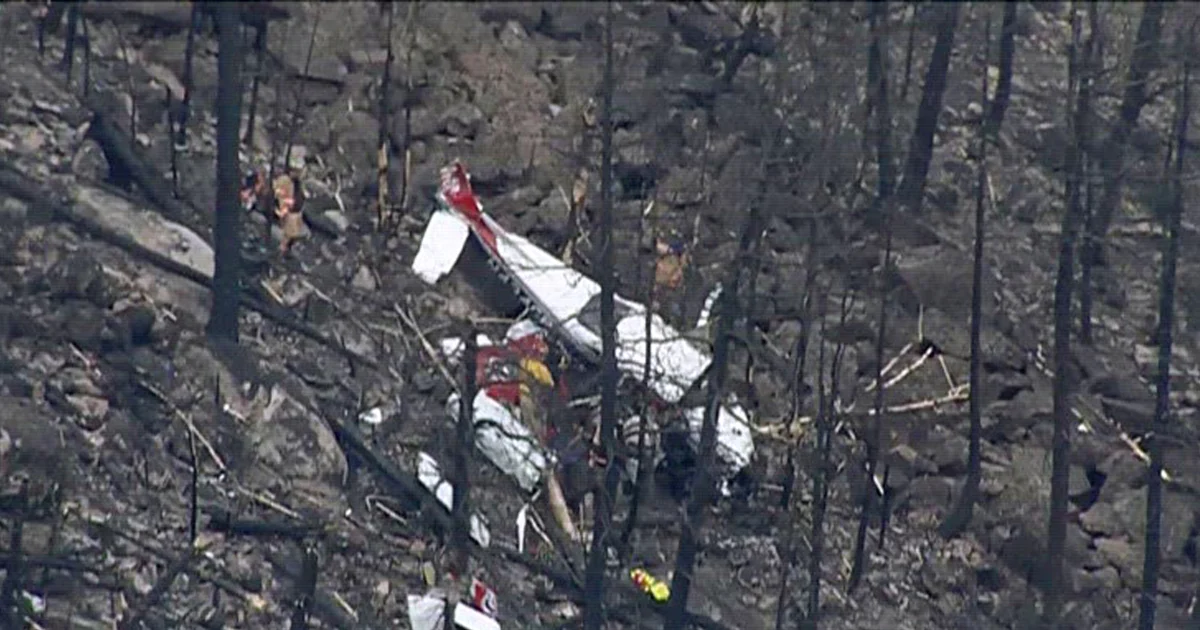On a somber day in Northern Colorado, a U.S. Civil Air Patrol (CAP) mission ended in tragedy as a small plane crashed near Palisade Mountain, claiming the lives of two individuals. The incident, which occurred during a routine flight operation, has left the aviation community, local residents, and families grieving. The accident has also raised questions about flight safety and the inherent risks faced by volunteer aviation organizations like the Civil Air Patrol.
This article explores the details of the crash, the role of the Civil Air Patrol, the impact on the local community, and the broader implications for aviation safety.
The Crash: What We Know So Far
The crash occurred near Palisade Mountain, a rugged area known for its challenging terrain and unpredictable weather conditions. Preliminary reports indicate that the plane, a light aircraft operated by the Civil Air Patrol, was on a training or reconnaissance mission.
Timeline of Events:
- Flight Departure: The plane took off from a nearby airport earlier that day, with plans to complete a routine mission.
- Incident Report: Witnesses reported hearing a loud sound and seeing smoke near the crash site shortly before authorities were alerted.
- Rescue Efforts: Local emergency responders, including firefighters, search-and-rescue teams, and aviation authorities, quickly mobilized. Unfortunately, upon reaching the crash site, they confirmed that both individuals aboard had perished.
Investigating the Cause
The National Transportation Safety Board (NTSB) and the Federal Aviation Administration (FAA) are leading the investigation into the cause of the crash. Factors such as mechanical failure, pilot error, and weather conditions will be examined.
The Civil Air Patrol: A Mission of Service
The Civil Air Patrol is a civilian auxiliary of the U.S. Air Force, consisting of volunteers who dedicate their time to search-and-rescue operations, disaster relief, and youth development through aerospace education programs.
A Brief History
- Founded in 1941: The CAP was established during World War II to provide civilian support for military operations.
- Current Role: Today, it remains an essential part of the aviation and emergency response community, often supporting missions in remote or challenging environments.
Risks Involved
While CAP missions are conducted with safety as a priority, the organization’s work inherently involves risks, especially in mountainous regions like Palisade Mountain, where sudden weather changes and challenging terrain can complicate flights.
Impact on the Local Community
The crash has deeply affected the Northern Colorado community, particularly those familiar with the Civil Air Patrol’s contributions. Local residents expressed grief and solidarity with the families of the deceased, recognizing the sacrifices made by CAP volunteers.
Community Response
- Vigils and Memorials: Candlelight vigils and online tributes have been organized to honor the lives lost in the crash.
- Support for Families: Local organizations and community members have rallied to provide emotional and financial support to the victims’ families.
The Emotional Toll
For many in the area, the incident is a stark reminder of the risks faced by aviation volunteers and the courage required to undertake such missions.
The Role of Geography and Weather
Palisade Mountain, located in Northern Colorado, is part of a region known for its breathtaking landscapes and challenging aviation conditions.
Geographical Challenges
- Terrain: The steep and rugged landscape can make navigation difficult, especially for smaller aircraft.
- Limited Emergency Access: Remote crash sites often delay rescue operations, increasing the risk for those involved.
Weather Hazards
Northern Colorado is notorious for sudden weather changes, including strong winds, thunderstorms, and temperature fluctuations. These factors can create hazardous flying conditions, even for experienced pilots.
Aviation Safety: Lessons to Be Learned
This tragic event underscores the importance of stringent safety measures and ongoing training for aviation personnel.
Key Areas of Focus
- Pilot Training: Ensuring that pilots are well-equipped to handle adverse conditions.
- Aircraft Maintenance: Regular and thorough inspections to prevent mechanical failures.
- Advanced Technology: Incorporating better navigation and communication systems to mitigate risks.
Broader Implications
The incident has sparked discussions within the aviation community about the need for enhanced safety protocols, particularly for organizations like the Civil Air Patrol that operate in high-risk environments.
Tributes to the Fallen
The two individuals aboard the aircraft have been hailed as heroes, dedicated to serving their community through their work with the Civil Air Patrol. While their names have not yet been publicly released, their contributions are remembered with deep respect and gratitude.
Statements from Officials
- Civil Air Patrol Leadership: “Our hearts are heavy with the loss of two of our own. Their commitment to service and dedication to our mission will never be forgotten.”
- Local Government: “The bravery and selflessness of these individuals embody the spirit of community and service. We stand with their families in this difficult time.”
Moving Forward: A Commitment to Safety and Service
As investigations continue, the focus remains on preventing such tragedies in the future. The Civil Air Patrol has reaffirmed its commitment to safety, promising to implement any recommendations that arise from the NTSB and FAA investigations.
Strengthening Protocols
Organizations like the CAP constantly strive to improve their safety measures, ensuring that volunteers can carry out their missions with reduced risk.
Community Support for the CAP
The Northern Colorado community, despite its grief, continues to rally behind the Civil Air Patrol, recognizing the invaluable role it plays in emergency response and aviation education.
Conclusion: Honoring Their Legacy
The plane crash near Palisade Mountain is a sobering reminder of the risks faced by those who dedicate their lives to service. The two individuals lost in this tragic event were more than just pilots; they were volunteers, heroes, and members of a community that values their courage and commitment.
As the investigation unfolds, their legacy will inspire continued efforts to prioritize safety, honor service, and remember the sacrifices made in the pursuit of helping others. In Northern Colorado and beyond, the contributions of the Civil Air Patrol remain a testament to the power of community and the enduring spirit of service.



